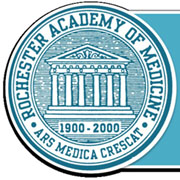Med students want to help minority communities
Joshua Vega, 23, sees a medical career as one way to break down cultural barriers that affect the Hispanic community. Thomas Fugate, 22, has always been concerned about the high incidence of hypertension and heart disease in the African-American community. As a doctor, he thinks, he’ll be able to help solve the problem.
Vega, a St. John Fisher College graduate from Rochester, and Fugate, who’s from Fairport and graduated from Xavier University in New Orleans, are first-year medical students at the University of Rochester School of Medicine. Fugate is one of six African-American males in this year’s class of 103. Vega is the only student of Puerto Rican descent. Last year’s freshman class of 101 had no African-American males (but seven females) and no students of Puerto Rican heritage (but four other Hispanic people). The UR, like other medical schools, is eager to increase the number of minority students, including African-American and Hispanic students. Medical schools in the United States accepted 18,858 applicants this year; 1,334 were black and 1,343 were Hispanic or Latino.
Vega and Fugate told me that some students don’t identify their race when they apply because they don’t want anyone to think they got in because of their race instead of their ability. But both students believe that their ethnicity will help them connect with disadvantaged populations and that better health care will open other doors. “A medical school isn’t just the buildings or the faculty,” Vega says. “It’s the students, too.” Doctors need to appreciate cultural differences in order to practice “patient-centered” medicine, and the students can teach each other about the cultures they come from.
It may well be that doctors from minority communities will spend much of their careers in underserved communities, says John Hansen, the medical school’s associate dean for admissions and professor of neurobiology and anatomy. But the real advantage is just what Vega describes. The students, he says, “study together, work together, have lots of opportunities to interact” — and the different perspectives they share will enrich them as doctors.
Fugate was at Xavier when Hurricane Katrina hit the Gulf Coast two summers ago. He fled with a pair of jeans, a couple of workout suits and the friends he could squeeze into his car. When he got back to school in January, he was stunned by the devastation. “The health care system collapsed,” he says, “and that just shouldn’t happen. I never want to see people die because they can’t get their meds, or be left in hospitals because they cannot be evacuated.”
“Medical school is not rocket science,” Vega says.”If you get in, you are capable of doing the work,” Fugate adds.”What’s hard,” Vega says, “is the amount of study every night if you’re going to stay on top of it.”
Vega’s other passion is playing jazz trumpet. “I couldn’t learn it on my own,” he says. “I only got better by playing with and interacting with other musicians.” As he sees it, med school works the same way. As he played jazz at various venues, Vega says, he’d notice that “so many Hispanics, especially from Puerto Rico and the Dominican Republic, barely speak a word of English. … I can help bridge the language barrier” to the medical community.
And that’s why med schools ought to be aggressive about recruiting minority students: Those doctors might bridge not just the language barrier but the health barrier, and in so doing they could help people who are poor and isolated find their way to success.
Mark Hare, Rochester Democrat & Chronicle






